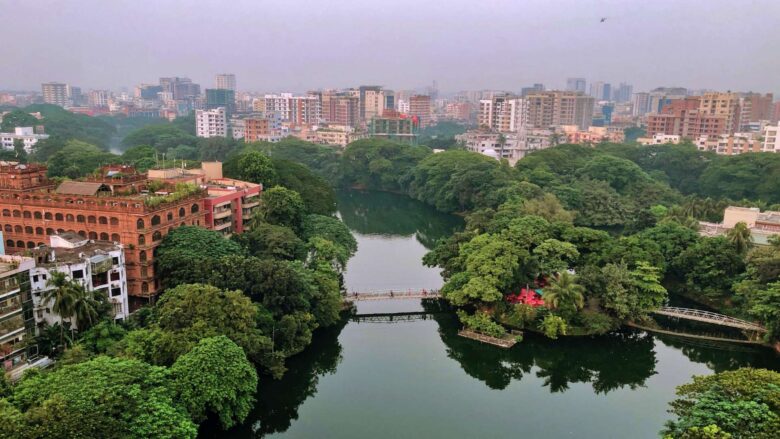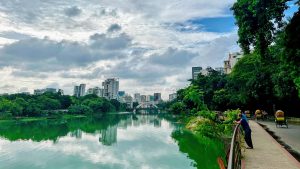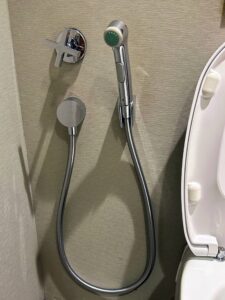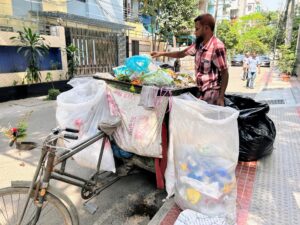Since we have never seen a city that works, we do not know what to expect. Our pinpointed focus remains stuck with our job, money, food and sleep—anything beyond these is seen not-urban. We assume our children will not play outside, we will never climb a tree, make a garden, grow veggies, ride a bicycle, row a boat, run a mile in a city in Bangladesh. We go back to focusing on money, job, food and sleep; for everything else we want to “go back” to our villages. We have never known a city that can offer those activities properly, and thus, we have removed it from the equation of urbanism. We do not demand or dream of a city where we can make outdoor and community activity an integral part of our urban lifestyle. We have never known, never seen, hence, we put up a strong disassociation from the cities we live in, we never belong.
Not only that, nouveau riches of Bangladesh frown upon those outdoorsy activities, as if those are something of the villagers, of the peasants, dirty, dusty stuff that urbanites should not get involved with; one air-conditioned confined space to another, houses to vehicles to office to homes, packed and wrapped inside fake comfortable cocoons—this has become our only acceptable form of urbanism. Our parents literally command their children in cities, “Don’t play in the mud, don’t go near the pond, don’t mix up with them, don’t climb a tree”—actually don’t go outside the house at all.
Throughout the world the opposite is true. Those outdoor community activities are the most important factors of measuring quality of life in a neighbourhood—a thing that is not even a part of our urban thinking. Probably we don’t have the space—that’s a fallacy; if that would have been the case, then why do all the new developments in the empty suburbia turn into the exact same mess? The space was always there. We never demanded that space. We never thought of them as important. We quickly gave up, and accepted the disassociation between cities and outdoor, that in turn kept producing ugly neighbourhoods and suffocating residential areas.
This disassociation with outdoor activities and cities puts a significant impact on how our mid-tier cities are growing. As we learn to accept that this too will become another row of buildings with minimum set backs, a grinding locale where there will be no outdoor fun, we learn to give up our ponds, lakes, walkways, open-spaces and greens. We stack up buildings after buildings, we buy land and apartments in places where there is zero urban outdoor and community facilities, we agree to these appalling developments. Because we have no association of city-dwelling and outdoor, community activities. We quickly give up, and think of going back to the villages or expensive resorts for those.
Then alas! Our villages are following the same path! We are giving up on what villages were meant to be, assuming, this is how should development work. No! Fuck! Hell no! It does not! Don’t embrace this shitty madness! Refuse to buy land and apartment in places where your children can not go outside to play safely, where they can’t climb a tree or jump in a pond. Refuse to fill up a water-body to build a residential tower, refuse development that kills a river or a lake. Living is not just going to work, coming home, eat, sleep, and shit. If you continue accepting this misery soon enough you will have no village to go back to. We get what we demand.
Embrace the city, but city with everything that you would have had in a village, albeit a better organised and efficiently shared with many.



